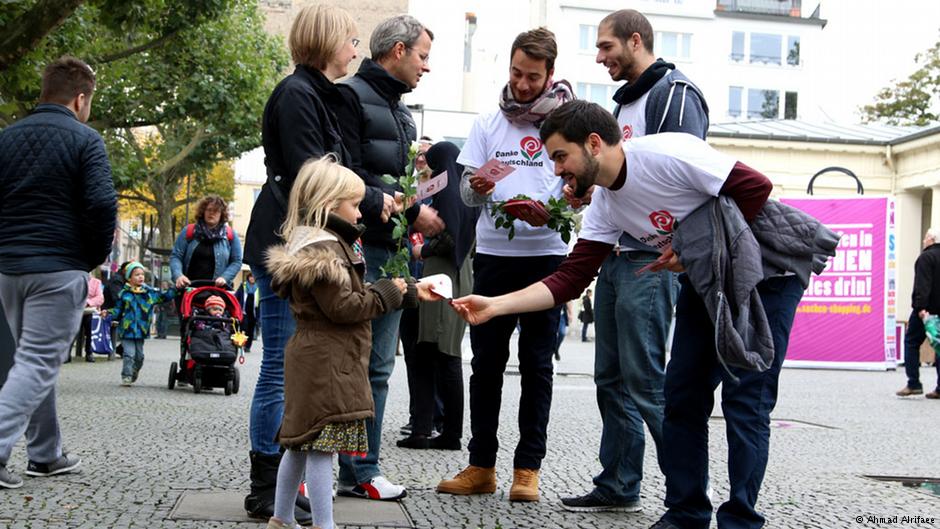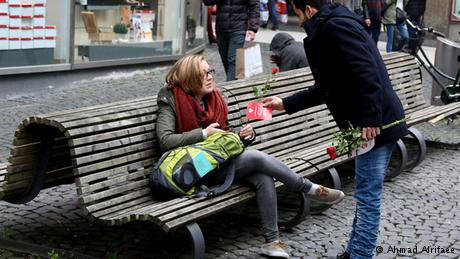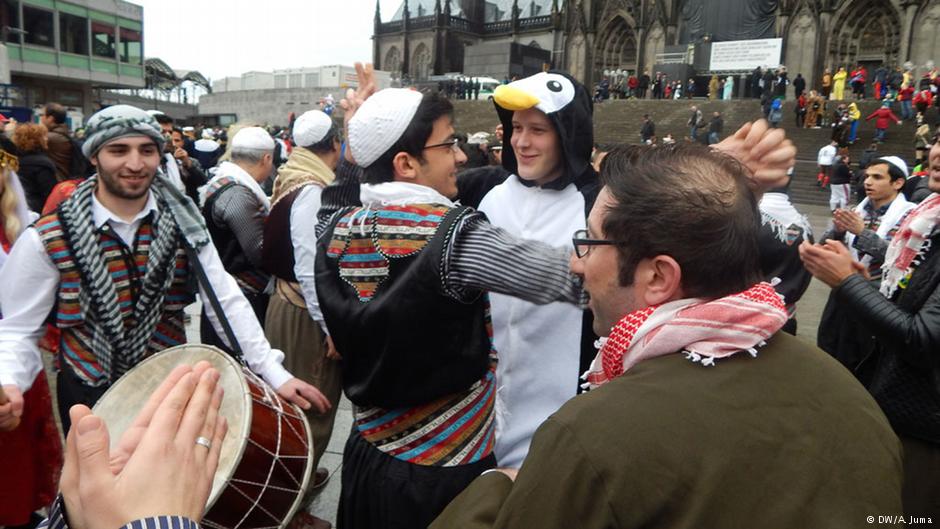GERMANY – Art is a powerful means of expression. It played significant roles in times of peace and war. While the scene in Syria has become blurred with the emergence of armed extremist groups on one hand, and the atrocities of a bloodthirsty regime on the other, art remains a meaningful weapon against all that darkness.
Fleeing from a war-torn country, many Syrians sought refuge in European countries, most notably in Germany. While the discourses on refugees ranged between supporting and rejecting the settlement of newcomers, there were many negative stories circulated and generalised about all refugees such as the New Year’s Eve sexual assaults in Cologne or the bullying of young refugees in a Munich subway. Indeed, parallel to the German “Wilkommenskultur”, there have been narratives against refugees in Germany, which reflect nothing but the tremendous fear of a significant segment of the German population: Refugees are going to affect the welfare in Germany because they must be provided with financial and social aid. This costs tons of money.
Witnessing the largest exodus in the recent history, it remains difficult to focus on art while other issues seem more pressing to tackle. I believe neglecting art is the first step in the wrong direction.
Somewhere in Germany, a confused soul might be begging the question … Are there positive signs?
Artistic Signs of Good Faith
In October 2015, a group of refugees – mainly Syrian artists in Germany – organised a campaign under the title “Thank you Germany” in an attempt to thank Germans for their hospitality of receiving tens of thousands of Syrian refugees in their country. Monas Bukhari, a Syrian artist and the founder of a socio-cultural group called “The Syrian House”, said to the German Press Agency: “The campaign aims at producing a photo book and opening exhibitions for Syrian photographers residing in Germany as a kind of appreciation for Germany’s generosity.” While hundreds of Syrians joined the campaign across Germany distributing red roses to locals, many Germans in return found the initiative as a sign of good faith.
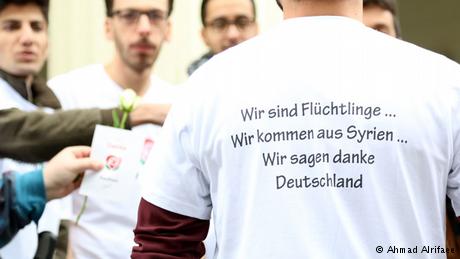
The exhibition, which goes under the name “Smile Of Hope”, will host the work of Syrian photographers residing in Syria in order to change the gloomy picture formed in Europe towards Syrian refugees and life in Syria over the past few years.
The same group also organised several musical concerts, in which German and Syrian musicians played different kinds of music side-by-side. This can be nothing but interesting.
On a different occasion on 08 February 2016, Syrian refugees participated in the celebrations of Rose Monday Carnival in Cologne. The Syrians wore local traditional clothes and danced to the tunes of popular German music. This wasn’t all. Syrian folklore bands such as “Sham Band To Revive The Heritage Of Damascus” and “Kurdistan Band To Commemorate The Kurdish Folklore”, organised by the Educational Centre for Human Rights in Wuppertal, joined the festival to play musical instruments and sing Arabic and Kurdish songs. As Donald Trump usually says: “It was a beautiful thing.”
A Song Wins
At times where Xenophobes and far-right groups claim the futility of integration programs and that Middle Easterners are inclined to be extremists planning to take over Europe, signs point exactly toward the opposite. No matter what the discourse about refugees in Germany is, a song wins the debate.
In cooperation with musician-activists in Bremen, Syrian musicians who fled the civil war built the Expat Philharmonic Orchestra to give back to their new community.
Double-bass-player Raed Jazbeh, who fled to Germany three years ago, embarked a journey of putting a small group of Syrian musicians together in Bremen. This has developed to become an orchestra, which combines songs from Syria and European classical music. The orchestra is composed of Syrian and local musicians defying the rhetoric of fear mongers, whose voices have arisen recently due to the refugee crisis in Europe.
“With music we can liberate ourselves from all the designations,” said flutist Fadwa Merkhan to Occupy.com. Merkhan played in the orchestra’s first performance on 22 September 2015 at Sendesaal Theatre in Bremen. The orchestra performed classical, jazz and Syrian music pieces at its premiere.
Musician and singer Ribal Al-Khudri is another example of a Syrian who found a safe haven in Germany. In his current project “Arabesque”, Al-Khudri says that he aims to build cultural bridges between people through music: Syrian artists on one hand and Germans on the other.
These young talents are trying to express the pain of Syrians with a song and draw a beautiful image of cultural Syria away from the image of violence portrayed by the media. It is true that the image of Syria is dominated by war. But it is also true that Syria has a rich culture. These are not only refugees, but also artists.
A Talent Is a Talent
A Syrian filmmaker, who is currently a refugee in Germany, turned into a “YouTube star” after he had cleverly dealt with the issue of integrating refugees in the German society. While the German society is struggling to understand the refugee crisis, the young Syrian Firas Al-Shater – with decent German – humorously highlights the habits of German people from the perspective of a newcomer. Through comedy and light humour, Al-Shater is trying to bridge the gap between Syrians and locals and to come a step closer to German people.
On 28 January 2015, Al-Shater aired the first episode of his video-series called “Sugar”. While his videos are funny, witty and down-to-earth, Al-Shater tells stories about his personal experience and his desire to learn more about Germans
In one of his videos, Al-Shater tells the story of an experiment he carried out at Alexander Platz in Berlin, in which he held a sign saying: “I am a Syrian refugee, I trust you, do you trust me? Hug me!”
The experiment appears to be an imitation of a video made by a Muslim Parisian YouTuber following the terrorist attacks in November 2015. At the end of the video, Al-Shater points out that in Germany it takes a little longer for people to show emotions, but if they do so, they no longer stop.
Art Knows No Borders
In 2011 at the beginning of the Syrian uprising, tragic tales against painters, singers, actors, poets, writers and other artists, most notably the torture of the cartoonist Ali Farzat who was savagely beaten by regime thugs for satirizing Syrian leadership, prompted many artists to flee their country. A great number of them arrived in Germany and other European countries. While some of them had to go through the tough asylum procedures, some others made it through art-scholarships.
In December 2015, Syrian painter Hussam Sarah opened his first caricature exhibition in the German city of Bonn, under the title “Comics From Syria”. The exhibition included 30 paintings to tell stories about different aspects of Syria.
Through his art, Sarah said that he wants to deliver two messages to the Germans. The first one is political by inviting German people to add more pressure to end the conflict in Syria. And the second one is to show that Syrian refugees are not amateur seekers of asylum. Syrian refugees can effectively contribute to and enrich the community in which they are.
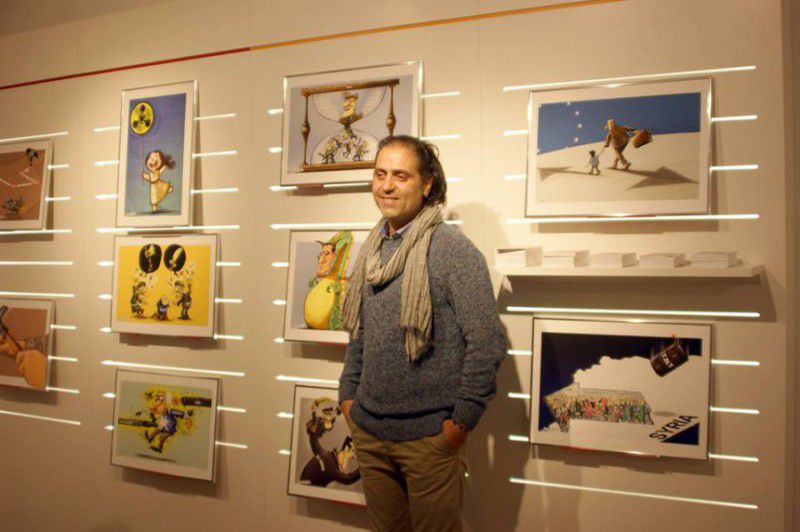
Another example is the Syrian painter Abdul-Razzaq Shablot, who received a Heinrich Boell foundation scholarship for arts and came to Germany in October 2014. “As an artist, I have to paint to feel alive, and in order to do so, I had to escape Syria,” he told the Deutsche Welle.
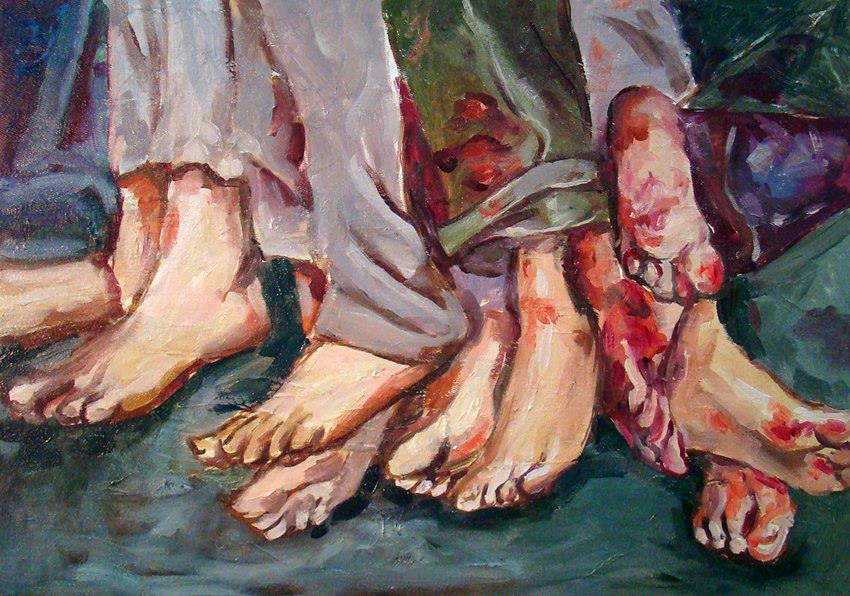
Examples of contributors are numerous and might increase in the coming few years to deem the number of passive refugees insignificant. In fact, those who made it are not only trying to share their talents with their German counterparts, but also seeking to show the tragedies of war, raise awareness and promote peace.
Are there positive signs that refugees can contribute to the society, which welcomed them? Yes, there are and these were just a few examples.



